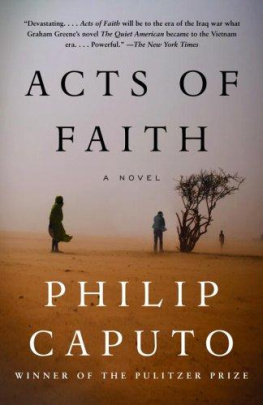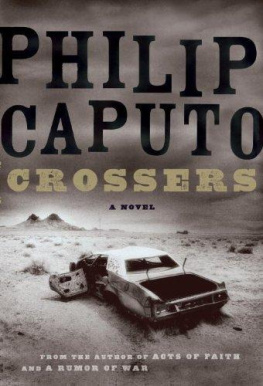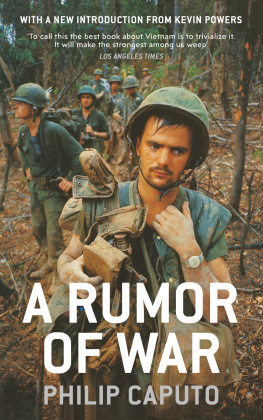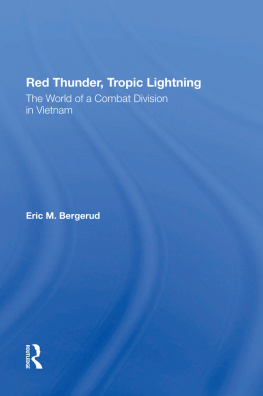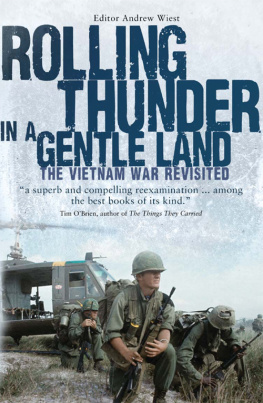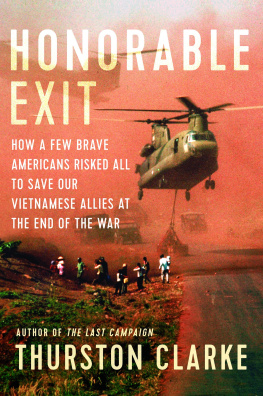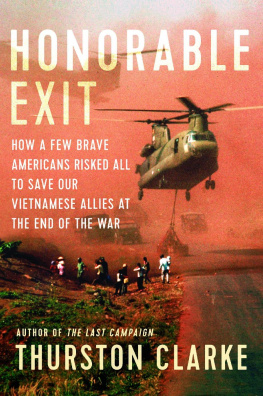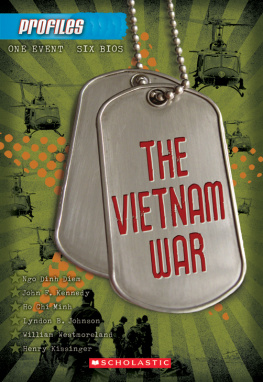I t was the war that lasted ten thousand days. The war that inspired scores of songs. The war that sparked dozens of riots. And in this stirring chronicle, Pulitzer Prizewinning journalist Philip Caputo writes about our countrys most controversial warthe Vietnam Warfor young readers. From the first stirrings of unrest in Vietnam under French colonial rule, to American intervention, to the Tet Offensive, to the battle at Hamburger Hill, to the fall of Saigon, 10,000 Days of Thunder explores the war that changed the lives of a generation of Americans and that still reverberates with us today.
Included within 10,000 Days of Thunder are anecdotes from soldiers and civilians, as well as profiles and accounts of the actions of many historical luminaries, both American and Vietnamese, involved in the Vietnam War, such as Richard M. Nixon, General William C. Westmoreland, Ho Chi Minh, Joe Galloway, Dr. Martin Luther King Jr., LyndonB. Johnson, and General Vo Nguyen Giap. Caputo also explores the rise of Communism in Vietnam, the roles that women played on the battlefield, the antiwar movement at home, the participation of Vietnamese villagers in the war, as well as the far-reaching impact of the wars aftermath.
Caputos dynamic narrative is highlighted by stunning photographs and key campaign and battlefield maps, making 10,000 Days of Thunder THE consummate book on the Vietnam War for kids.

PHILIP CAPUTO shared a Pulitzer Prize in 1973, when he was a reporter for the Chicago Tribune. A Rumor of War, a memoir of his service during the Vietnam War as a marine lieutenant, has become a classic with more than two million copies sold since its publication in 1977. Philip Caputos most recent novel is Acts of Faith . He is also the author of nine other books: Horn of Africa, DelCorsos Gallery, Indian Country, Means of Escape, Equation for Evil, Exiles, The Voyage, In the Shadows of the Morning, and Ghosts of Tsavo . He lives in Connecticut.
Jacket photographs courtesy of AP/Wide World Photos
Jacket design by Abelardo Martnez
VISIT US ON THE WORLD WIDE WEB
www.SimonSaysKids.com
A Byron Preiss Visual Publications, Inc., Book
Atheneum Books for Young Readers
Simon & Schuster New York


Dedicated to the families of the 58,209 U.S. servicemen and -women who gave their lives in Vietnam
Atheneum Books for Young Readers
An imprint of Simon & Schuster Childrens Publishing Division
1230 Avenue of the Americas
New York, New York 10020
www.SimonandSchuster.com
Text copyright 2005 by Philip Caputo
All other materials copyright 2005 by Byron Preiss Visual
Publications, Inc.
Front jacket photo caption: A combined U.S. and South Vietnamese
action against Viet Cong guerrillas in 1962.
Title page photo caption: U.S. soldier protects South Vietnamese
villagers during a mission to round up suspected Viet Cong.
All rights reserved, including the right of reproduction in whole or in part in any form.
The text of this book is set in Goudy.
Manufactured in the United States of America
First Edition
10 9 8 7 6 5 4 3 2 1
Library of Congress Cataloging-in-Publication Data
Caputo, Philip.
10,000 days of thunder : a history of the Vietnam War / Philip
Caputo.1st ed.
p. cm.
ISBN 0-689-86231-8 (ISBN-13: 978-0-689-86231-1)
eISBN-13:978-1-4424-4454-6
1. Vietnamese Conflict, 19611975Juvenile literature.
2. Vietnamese conflict, 19611975United StatesJuvenile
literature. I. Title.
DS557.7C36 2005
959.704'3dc22 2004015468
PHOTO CREDITS:
Air Force Archives:
AP/Wide World Photos:
Bettmann/CORBIS:
Hulton-Deutsch/CORBIS:
John F. Kennedy Library:
Library of Congress:
Lyndon Baines Johnson Library:
Modern Military Records, National Archives:
National Archives:
National League of Families of American Prisoners and Missing in Southeast Asia:
Naval Institute Archives:
Nixon Presidential Materials Staff, National Archives:
Philip Caputo:
William Robert Hodder:
TABLE OF CONTENTS
INTRODUCTION
T he Vietnam War has three dubious distinctions: It was the longest and the most unpopular war in American history and the only war America ever lost.
Whether as advisors to the South Vietnamese Army or as combat troops directly engaged in fighting the Viet Cong and the North Vietnamese Army, U.S. soldiers served in Vietnam from 1959 to 1975, making the war twice as long as the War of Independence (17751783).
In some ways, the war was easier on troops than previous conflicts had been for their fathers and grandfathers. U.S. fighting men were not in for the duration of the war as they had been in World War I and World War II but served fixed tours of duty of one year (except for marines who served for thirteen months). Sophisticated medical techniques and helicopter evacuations from the battlefield greatly reduced a soldiers chances of dying from his wounds. Americas overwhelming superiority in firepower also kept casualties down. If they got into trouble, soldiers could count on devastating air strikes and artillery barrages to help them get out of it.
In other ways, the war was much more difficult. Although there were many instances of conventional-style fighting, the war was mostly an unconventional, guerilla conflict fought against an elusive enemy in thick jungles, where it was difficult to see much farther than a few yards in any direction. While certain areas of Vietnam were safer than others, there were no established front lines; the enemy could be behind you as well as in front of you.
The Viet Cong, as Communist guerillas were called, were not as well-armed or well-trained as their North Vietnamese Army allies, but they were masters of bushcraft and hit-and-run tactics, skilled in staging ambushes and in land-mine warfare. They were active mostly at night, appearing and disappearing like ghosts. One of their favorite tactics was to set an ambush by placing an electronically controlled mine or booby trap on a trail used by American patrols, then the Viet Cong ambushers would hide nearby and detonate the mine by remote, when the patrol arrived, shoot a brief burst of automatic rifle fire at the same time, and then vanish into the jungle.
I was a lieutenant in Vietnam. My platoon (a platoon is a unit consisting of about thirty to forty men) was caught in just such an ambush one day in 1965. In seconds, nine of my men were wounded, five of them gravely, and we never saw the enemy, never had a chance to shoot back. I served in Vietnam with two different marine infantry battalions in 1965 and 1966. One of those battalions suffered well over four hundred dead and wounded in its first four months in combat. My company was whittled down from 175 to 90 men during that period, and today I can find the names of 16 of my close friends carved on the Vietnam War Memorialthe Wallin Washington, D.C.
To make matters even more difficult, the Viet Cong seldom wore uniforms. They were indistinguishable from civilians. A rice-paddy farmer plowing his field behind a water buffalo was as likely to be a guerilla fighter as not. It was often impossible for an American soldier to tell who was the enemy and who wasnt until he was shot atand then it would be too late.
The climate and terrain made for tough conditions to fight in. Vietnam is a tropical country consisting of rugged, mountainous jungle; vast marshes; and rice paddies that turn into swamps during the monsoon season, when rains fall nearly every day for six months. During the other six monthsthe dry seasontemperatures of 100 degrees Fahrenheit are common. The extreme heat could inflict more casualties than the enemy. I recall one patrol when a dozen marines in our company were taken out of action due to heatstroke and heat exhaustion. The temperature that day was an astounding 117 degrees!
Next page

